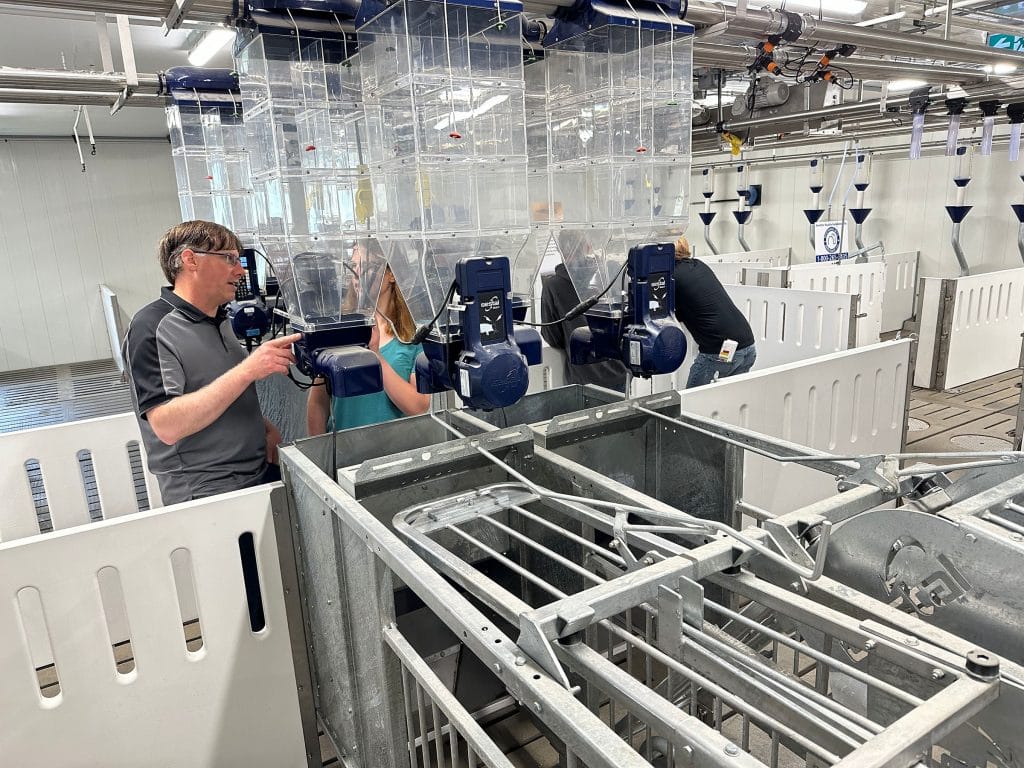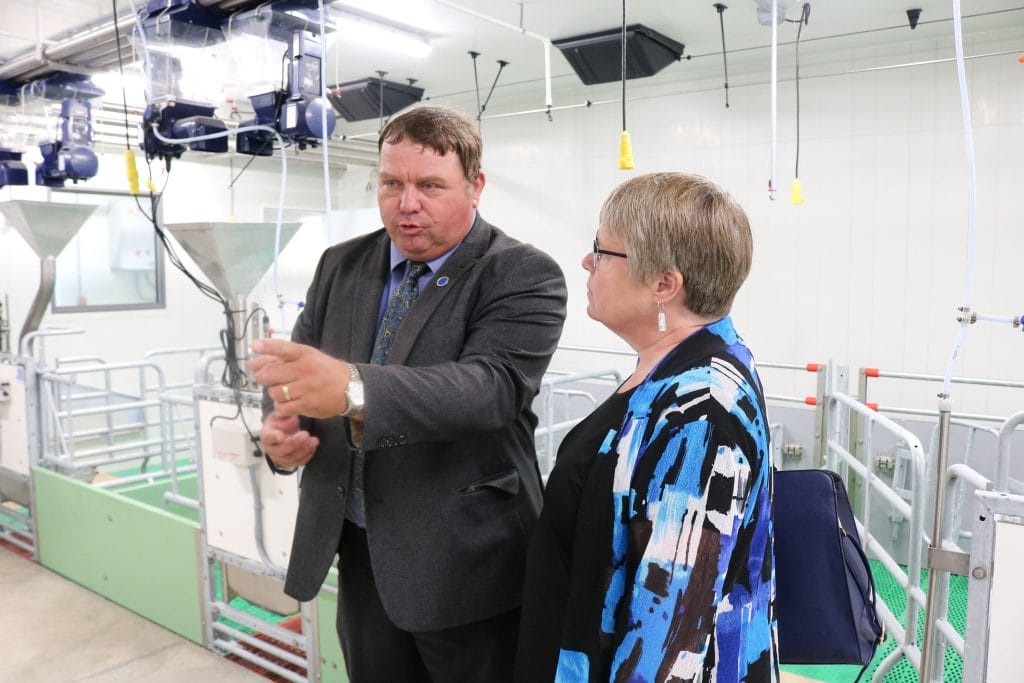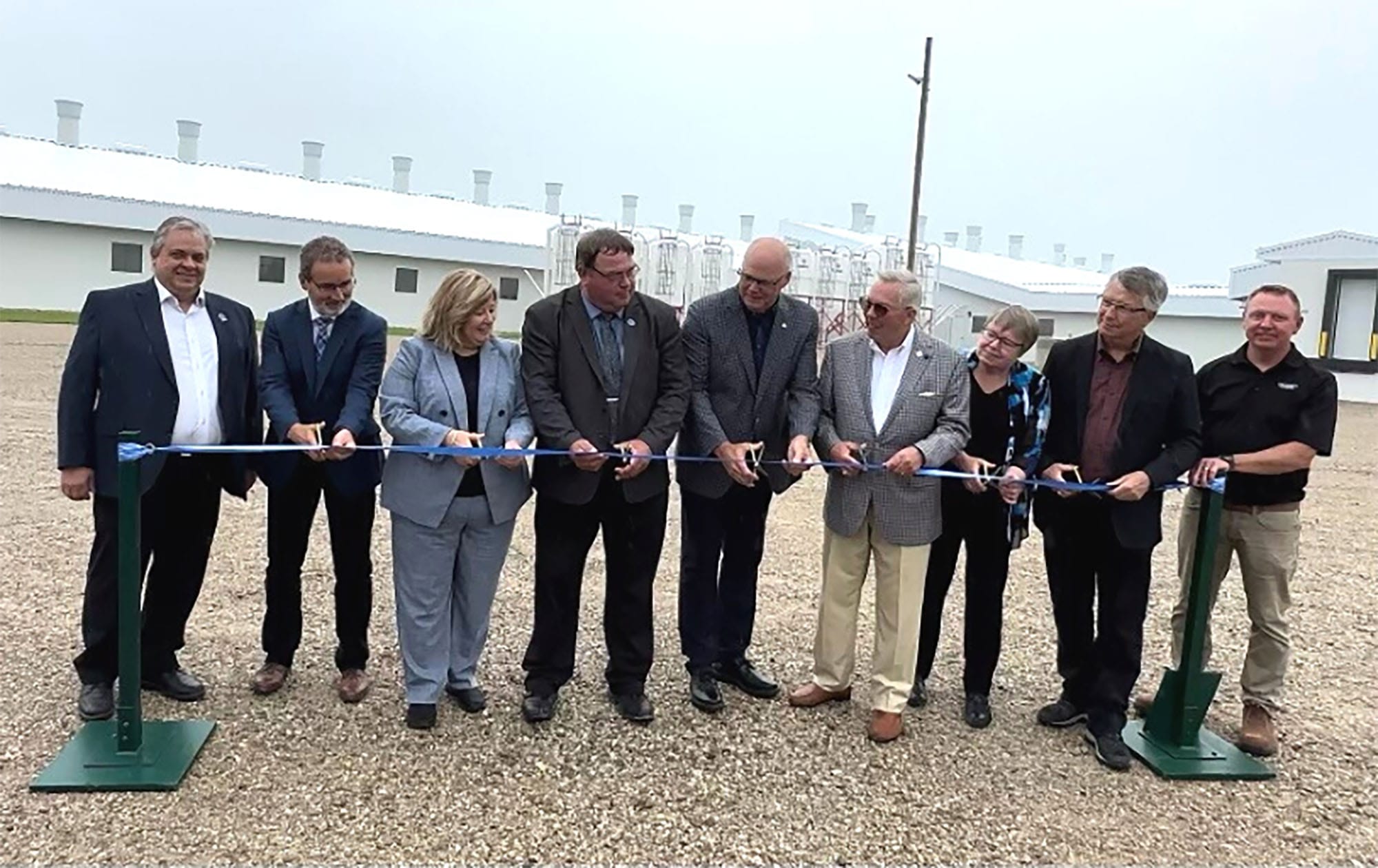CENTRE WELLINGTON – The new Ontario Swine Research Centre opened in Elora on Aug. 24.
It will offer research opportunities as well as innovation and the development of new technology to benefit Ontario pork producers and consumers.
The $20-million research centre is replacing the Arkell Swine Research Station located near Guelph, and was celebrated by representatives of the University of Guelph (UofG), the province, federal government and Ontario Pork.
With the collaborative investment from the Government of Ontario, the Agricultural Research Institute of Ontario (ARIO) and Ontario Pork, the new facility is the newest addition to the provincial network of research centres owned by ARIO. It is managed by UofG through the Ontario Agri-Food Innovation Alliance.
“Ontario Pork’s ongoing investment in research and development follows a long tradition of swine research in Ontario and represents a renewed commitment by pork producers and industry partners in their dedication to continuous improvement in the pork industry,” stated Ontario Pork board chair John de Bruyn in a press release.
He told the Advertiser his family has farmed in Oxford County since 1966 and explained Ontario Pork represents 997 farmers who market 5.9 million hogs in Ontario.
Out with old, in with new

Equipment inside the new research centre.
The board chair added swine research is not new, but always ongoing. He noted the previous station is over 40 years old.
“It was time to revamp,” he said. “The university as well as ARIO [and] the government came to us … so then we had a lot of input into how we designed the new research facility.”
The Ontario Swine Research Centre is the latest addition to a site that houses the Ontario Beef Research Centre and the Ontario Dairy Research Centre.
All three facilities, according to a UofG press release, “reflect successful academic-industry-government partnerships which provide research infrastructure and technical expertise for research on pressing livestock priorities.”
Dr. Lee-Anne Hubers, a UofG professor who has training in swine nutrition, told the Advertiser the plan is to eventually have all research stations for all species centralized in Elora.
“I cannot [express] how excited I am as a researcher [for the new centre], and my students are just thrilled. But now the real work begins. It’s rubber meets the road, and we have to start our research,” she said.
Sows will be moving into the research centre at the end of September. Hubers said this allows enough time for the final disinfection of the barn after opening day, and to ensure all systemic electronics are running. Research will begin about two weeks later.
The barn itself measures 60,600 square feet and it will house about 340 sows. The research centre also has a space for between 700 to 900 nursery pigs.
“One of the amazing features about the facility is that the design team really kept flexibility top of mind,” said Hubers. She explained the barn has the capability to remove partitions to change the size of pens, or the number of pigs per pen, to accommodate the research being done. There is also space for 600 finishing hogs, where pens can be adjusted.
Bio-secure

New digs – Ontario Pork board chair John de Bruyn and University of Guelph provost and vice-president (academic) Gwen Chapman check out the new Ontario Swine Research Centre location in Elora.
“Another cool feature of the facility is that it has an isolation unit,” said Hubers. “There’s risk if you bring in any outside pigs that are outside of the animals that are already there.”
Swine barns follow highly secure biohazard measures such as showering before and after going into the barn. Pigs can contract the same illnesses as humans, which is one reason these procedures are put in place.
To take extra precautions, any supplies brought into the research centre pass through a window with a UV light that disinfects all items. For bigger items going into the centre, such as feed bins, there is a disinfecting bay and an aerosolized disinfectant that sprays the item. The item then sits for some time before it can be brought in.
“This isolation facility is completely sealed off from the rest of the barn. If we wanted to test the different genetics [of the pig] or something, we bring them into isolation, they stay there for about 30 days, and we do all the testing to make sure that [the new animal] is not going to introduce any disease into our actual research station,” Hubers explained.
“Once they pass those tests, [the pig] can come inside. This is something that the old facility couldn’t do. The herd was completely closed, the only thing that we could bring in was semen.
“We couldn’t look at different genetics or types of pigs or anything, we were really constrained. But now with the isolation facility, we can bring in and test any genetics we want.”
UofG experts said the provincial and federal governments announced they will provide $1.75 million through the Canadian Agricultural Partnership for a feed distribution system and electronic sow feeders at the centre.
Being a swine nutritionist, Hubers said she is “most excited” about the feeding technologies coming into the facility.
“These feeding systems really give us endless possibilities for the type of nutrition research that we can do at any stage of production,” she said.
“And the precision that they operate with is essential for research so that we know the animals are getting fed what we designed them to get fed in the first place.”
Hubers said for a full year she will be focusing on gestation and lactation research.
“It’s just really an infinite number of possibilities that we can explore,” she added.
To learn more about the new centre in Elora visit news.uoguelph.ca. For more information about Ontario Pork visit ontariopork.on.ca.




